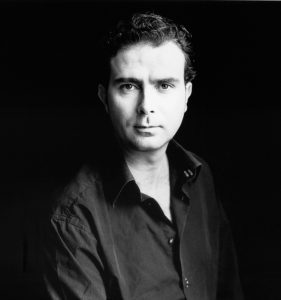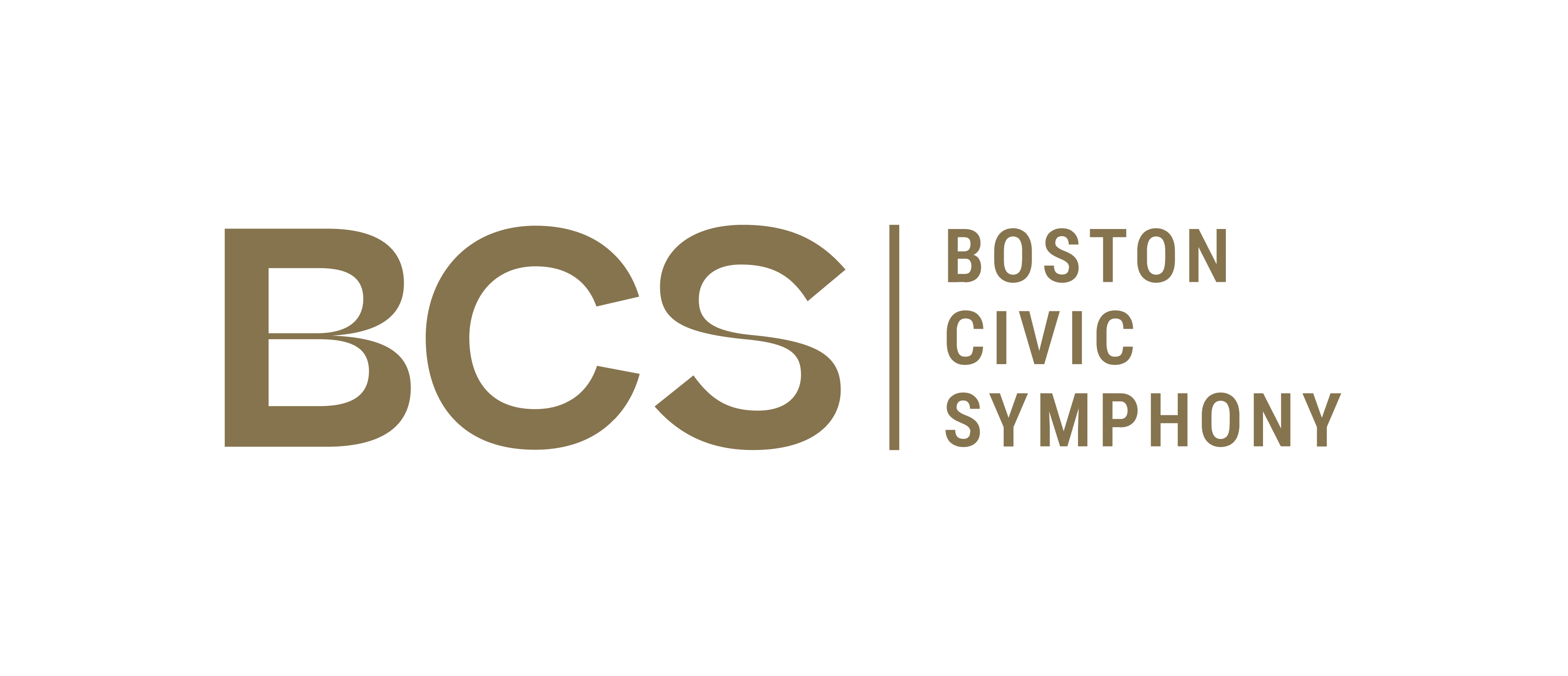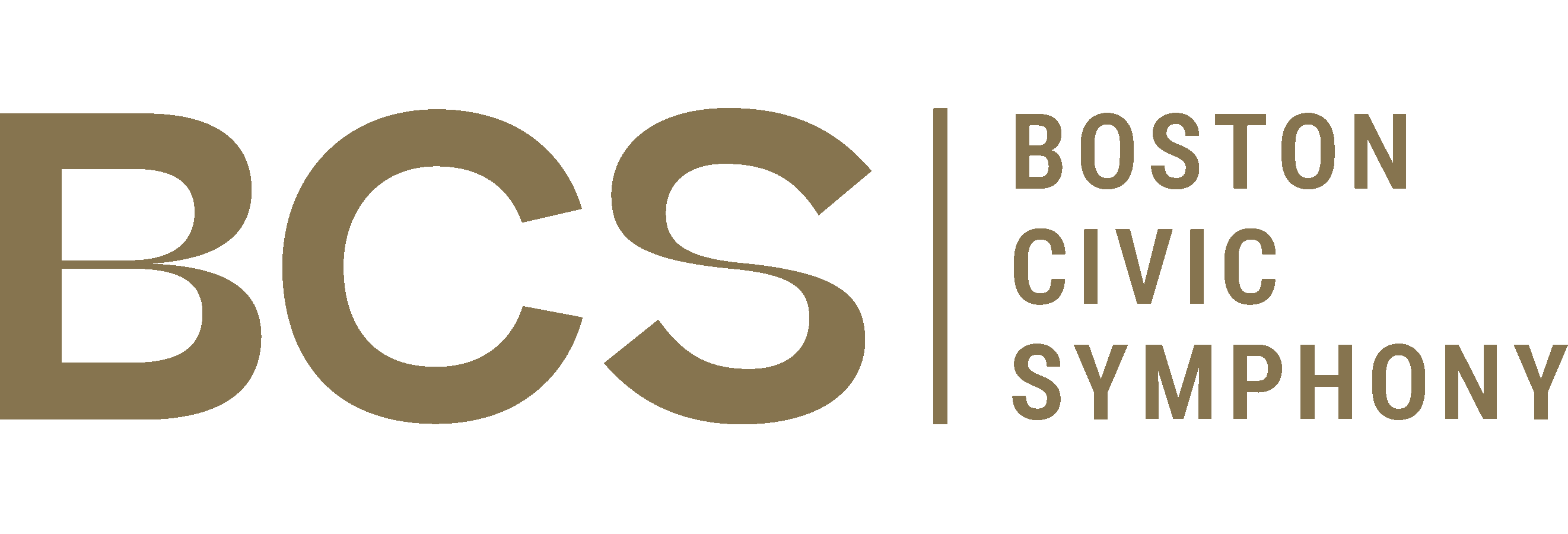Weber, Ginastera & Brahms
Sunday, November 13, 2016 2:00pm
Jordan Hall
Weber (Orch. Berlioz): Invitation to the Dance Op. 65
Ginastera: Harp Concerto Op. 25
Brahms: Symphony No. 2 in D Major Op. 73
About the Artists/Music
-
 Ciarán Nagle Tenor
Ciarán Nagle Tenor Ciarán Nagle’s first real interest in singing began when he was ten, when he played the lead role in a school production of The Gypsy Baron. From that moment, singing and music have always been his passion. Ciarán trained in the College of Music Dublin and in the Royal Academy of Music Dublin. He became a member of the National Chamber Choir of Ireland, singing with them until 1998. Under the baton of Robert Shaw, he performed at NY’s Carnegie Ha
Ciarán Nagle’s first real interest in singing began when he was ten, when he played the lead role in a school production of The Gypsy Baron. From that moment, singing and music have always been his passion. Ciarán trained in the College of Music Dublin and in the Royal Academy of Music Dublin. He became a member of the National Chamber Choir of Ireland, singing with them until 1998. Under the baton of Robert Shaw, he performed at NY’s Carnegie Hall in productions of Haydn’s “Creation” and “Seasons.” Ciarán has worked extensively with Opera Ireland, appearing in numerous productions, including: La Cenerentola, Faust, The Magic Flute, La Boheme, MacBeth, Falstaff, and The Tales of Hoffman. A keen fan of musical theatre and operetta, Ciarán has performed such roles as “Gaylord Ravenal” in Showboat, “Ralph” in HMS Pinafore, “Cascada” in The Merry Widow, and “Tony” in WestSide Story.
This led to Ciarán’s appointment in 1998 as the lead male singer of Riverdance, with whom he toured for two years across Europe and Japan. Upon returning to Dublin, he became a founding member of the Three Irish Tenors, which has gone on to win huge national and international success.
Known affectionately as “The Anthem Man,” Ciarán has sung the Irish National Anthem for both the Hurling and Gaelic Football All Ireland Finals in Croke Park to capacity crowds in excess of eighty thousand. He also sang the National Anthem at several world cup qualifiers in Landsdowne Road to crowds of more than fifty thousand people. In 2005, Ciarán sang the “Rose of Tralee” at the final presentation of the globally renowned pageant by the same name, and he has had the privilege of singing the American National Anthem at the invitation of the Pittsburg Steelers in the Heinz Field Stadium. At the 2002 Fourth of July Celebrations in Dublin, he performed with Neil Diamond, singing both the American and Irish National Anthems.
Ciarán is also the producer (and a performer) of Druid – A Musical Journey – Which has tours in the US and Europe.
His latest show, Nollaig: An Irish Christmas – is a unique and personal show where he performs with some of the world’s most renowned musicians and Irish dancers and with his life partner Tara Novak (Violin and Voice). Nollaig: An Irish Christmas premiered in the US in December of 2011, to huge critical acclaim.
Aufforderung zum Tanze (Invitation to the Dance)
– Carl Maria von Weber
Born about November 18, 1786, in Eutin, Germany
Died on June 5, 1826, in London, England
Berlioz’s orchestration of this work was premiered on June 7, 1841, at the Paris Opèra. It is scored for piccolo, flute, two oboes, two clarinets, four bassoons, four horns, two trumpets, two cornets, three trombones, timpani, two harps, and strings.
Although the name of Carl Maria von Weber seldom arises in discussions of musical innovators, he is the undoubted father of German Romantic opera. In other words, it was upon his foundation that later German operatic developments were built, making Weber the enabler of Wagner’s earth-shattering music-dramas nearly a half century after the elder composer’s death. Having only ten operas to his credit (and several of them incomplete), Weber’s impact on the music world is even more amazing.
Weber was born into a family of traveling musicians who trekked across Bavaria and presented singspiels (folk operas) to villagers. His education was scant, mostly gained during his family’s brief stops in cities along the road, usually for no longer than three or four months at a time. To his advantage some of these towns offered noted musicians. Perhaps most significant was Michael Haydn in Salzburg with whom young Carl studied when the troupe was stranded there during Napoleon’s campaign of 1797. After six more years of traveling and the composition of three operas, Weber settled in Vienna in 1803, but left after just one year to assume duties as kapellmeister at a theater in Breslau (in modern-day Poland). It seems that his professional life suffered from the same wanderlust that affected his parents, as Weber quickly moved from one job to the next. Between 1804 and 1810, he held three different positions and, after being fired from the last one (a diplomatic position in Stuttgart), resumed his familial vagabond music-making for three more years. He settled in Prague for a time, and then took a position in Dresden – a job that lasted from 1816 until his death in 1826 at just thirty-nine years of age.
In 1819 Weber composed a “rondo brillante” for the piano entitled Aufforderung zum Tanz (Invitation to the Dance). Dedicated to his wife, this extended work was the first concert waltz to be composed, predating the first such works by Johann Strauss by nearly a decade. Although Weber’s piano works are almost never performed nowadays, this piece made a small splash and then receded from memory.
In 1841, 15 years after Weber’s death, the Paris Opèra decided to revive his opera Der Freischütz. Hector Berlioz was asked to provide a ballet to be presented in the third act, as was the custom in France. He agreed on the condition that the opera be performed in its entirety and without the usual cuts that were too often imposed on stage works in those days. He also insisted that any music added to the production be only by Weber. For Berlioz’s part, he chose Invitation to the Dance and orchestrated the work for use in the opera. The only change he made was to transpose it up a half-step to the key of D-major.
Almost immediately after opening night, Berlioz’s segment was in demand as a concert work. The piece begins with a slow introduction that becomes much quicker as it introduces a charming waltz theme. As with any rondo, the main theme is interspersed with new melodies—some exuberant, some poignant—but a rousing finale concludes the main portion of the work. Beware of the stealthy coda that appears without warning.
©2016 Orpheus Music Prose & Craig Doolin
www.orpheusnotes.com
Harp Concerto, Op. 25
– Alberto Ginastera
Born April 11, 1916, in Buenos Aires, Argentina
Died June 25, 1983, in Geneva, Switzerland
This work was premiered on February 16, 1965, in Philadelphia, Pennsylvania, by the Philadelphia Orchestra conducted by Eugene Ormandy and harpist Nicanor Zabaleta. It is scored for solo harp, piccolo, two flutes, two oboes, two clarinets, two bassoons, two horns, two trumpets, percussion, timpani, and strings.
Argentinean composer Alberto Ginastera was one of the most important composers to emerge from the Western Hemisphere in the twentieth century. As part of a worldwide nationalist trend among composers that included William Walton in England, Ottorino Respighi in Italy, and a host of American composers including Aaron Copland and Leonard Bernstein, Ginastera incorporated folk elements – sometimes actual folk tunes – in his many scores from the 1930s until the 1950s. His final three decades featured much more experimental techniques, including serialism.
Trained solely in Argentina, he remained in his homeland until he was nearly thirty. After a series of successes with his ballet scores, he received a Guggenheim Grant to study in the United States with Copland, among others. As an opponent of Juan Peron’s regime, Ginastera found limited successes in Argentina until after the dictator’s defeat in 1955. Because of the political climate, he traveled extensively, most notably to Europe in 1951 to participate in the annual convention of the International Society of Contemporary Music (ISCM) at which his String Quartet No. 1 was given its European premiere. It was through this visit that Ginastera’s music received widespread performances in Europe.
Ginastera composed in many genres, but was especially comfortable writing for the stage, with operas and ballets holding prominent spots in his catalog. He also composed several concertos—two for piano, two for cello, and one for violin. His other concerto is for the harp.
The idea to commission a harp concerto came from the principal harpist of the Philadelphia Orchestra, Edna Phillips. However, she had no idea that the work would take from 1956 until 1964 to complete. As the years passed, Phillips was in periodic contact with the composer to nudge him along. On several occasions, she wrote to Ginastera with questions that showed that she sometimes doubted his dedication to the project. Sometimes he sent individual pages of the harp part with no indication of how or where they fitted into the work as a whole. By the time it was finally complete, Phillips had retired. Although she had commissioned the work, the premiere fell to the illustrious harpist Nicanor Zabaleta.
Ginastera wrote:
“My Harp Concerto is divided into three movements:
“The first one, marked Allegro giusto, is built on a kind of sonata form, concentrating more elements at the end of the re-exposition and coda.
“The second movement, Molto moderato, is a juxtaposed form in four sections, A-B-C-A.
“The last movement, Liberamente capriccioso — Vivace, has a form equivalent to that of an Introduction and Rondo. The Introduction is a long cadenza for harp alone. The Rondo, in which one can recognize some rhythmic elements of Argentine music, is the last part of the movement. It has five sections, A-B-A-C-A.”
©2016 Orpheus Music Prose & Craig Doolin
www.orpheusnotes.com
Symphony No. 2 in D major, Op. 73
– Johannes Brahms
Born May 7, 1833, in Hamburg, Germany
Died April 3, 1897, in Vienna, Austria
This work was first performed on December 30, 1877, in Vienna with Hans Richter conducting. It is scored for woodwinds in pairs, four horns, two trumpets, three trombones, tuba, timpani, and strings.
After Beethoven’s death in 1827, composers were held to an almost unattainable standard. The shadow cast by his nine symphonies, a monolithic body of work, intimidated many composers, causing some to delay their first efforts in the genre until later in life. Johannes Brahms, although a successful composer in his 20s, did not compose his Symphony No. 1 until he was 43. Perhaps he explained it best, “You have no idea how it feels to hear behind you the tramp of a giant like Beethoven.”
While Brahms’s first symphony is a monumental statement of personal triumph, the second is more intimate – a gentle caress of sound that is more in the spirit of a sunny serenade. It is almost as if the specter of Beethoven had disappeared and Brahms was now able to freely compose symphonies without repression or fear. While the first symphony took nearly a decade to complete, the second was finished in just four months. When the composer discussed the new work with friends, he playfully described it as a very somber and tragic work. “The new symphony is so melancholy that you will not be able to bear it,” he told his publisher, Fritz Simrock. Nothing could be further from the truth.
Brahms’s Second Symphony begins with a three note musical germ that pervades the entire symphony. First heard in the low strings, the motif D—C-sharp—D is found in each movement in nearly every theme as the symphony unfolds. The first movement, “allegro non troppo,” receives its almost pastoral character from its broad horn melody – purposely avoiding a gigantic opening as in the first symphony and replacing it with an expansive musical landscape. It is easy to speculate that Brahms might have intended this as a musical portrait of Lake Worth in Southern Austria where he composed the bulk of the symphony. Continuing with a second theme that bears a remarkable resemblance to the composer’s famous “Lullaby,” it is tinged with tender melancholy. Brahms’s three-note motif returns in the development section and is put through every possible twist and turn. The recapitulation emerges from the storm and the movement ends peacefully.
The second movement, “adagio non troppo,” is deeply emotional, easily the most introspective section of the work. Cast in sonata form, this perfectly balanced movement explores the many subtleties of the musical spectrum, perhaps most notably the shadings and contrasts of major and minor chords.
Marked “allegretto grazioso,” the third movement has a decidedly rustic charm. This lilting section opens with an oboe solo that sounds almost like a rustic waltz. As the movement progresses, the strings present a new segment in 2/4, setting up the triple/duple contrast that occurs throughout the movement.
The finale, “allegro con spirito,” is rhythmic and effervescent. Opening with a quiet passage, the movement erupts forth with excitement. Unexpectedly, the second theme takes on the character of a chorale with a palpable aura of restrained power. Brahms develops both themes and proceeds through a meticulously crafted recapitulation before the glorious coda. In this final section, he recalls the chorale – this time unleashing all the bottled energy to end the work in triumph.
©2016 Orpheus Music Prose & Craig Doolin
www.orpheusnotes.com



